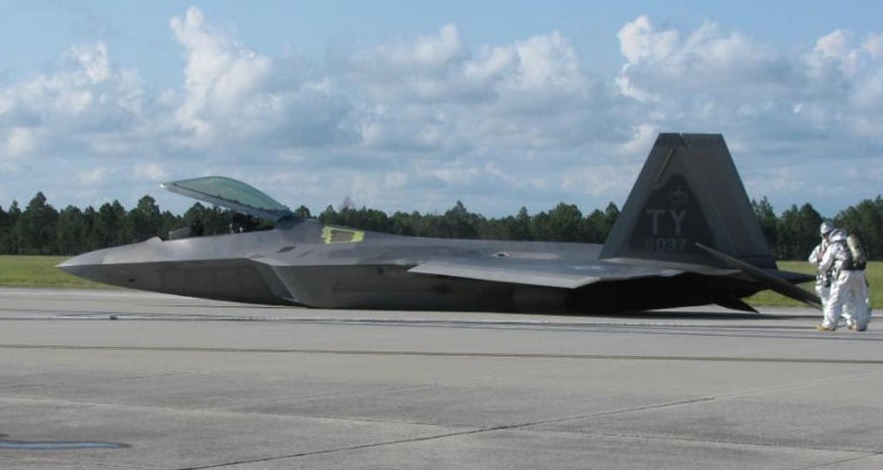Major Philip “Stonewall” Johnson from Hill AFB 514th Flight Test Squadron made a successful flight in the F-22.
In October 2019, Lockheed-Martin F-22AnRaptor serial 02-4037/TY made a functional check flight at Hill Air Force base (AFB), UT after an extensive 7-year repair of the aircraft at the Ogden AirnLogistics Center (OO-ALC).
According to Scramble Magazine, Major Philip “Stonewall” Johnson from the locally based 514th Flight Test Squadron (FLTS) made a successful flight in the aircraft. It was not reported if the aircraft had already been re-delivered to operational service.

# 02-4037 was badly damaged when it failed to lift off during a touch-and-go at Tyndall AFB, FL. on May 31, 2012.
It was operated by the 43rd FighternSquadron ‘Hornets’ at the time. It was determined that repairing the aircraft was feasible and worth the costs.

As we have previously reported details on the repair effort were disclosed in 2017 by Joseph Nelson, a U.S. Air Force (USAF) civilian working in the Air Force Lifecycle Management Center.
The repair effort began shortly after the mishap occurred when a team of USAF, Lockheed, and Boeing structural repair experts convened to analyze damages valued at about $35 million.

In addition to repairing scratches to the skins of the wing and the stabilator, the USAF also replaced the skins and doors of the central and aft fuselage.
The analysis also showed that two internal components – a fuselage bulkhead and a section of wing skin – required the USAFnto to install metallic and carbon fibre patches. The most significant repairs were made to the bulkhead known as flight station 637, where buckled webs needed to be replaced with large structural patches.
Noteworthy the process to return the aircraft to service condition offers a glimpse into the effort the USAF undertakes to keep as many of the limited number of F-22 fifth-generation fighters flying rather than writing them off after extensive damages.
Photo by Alex R. Lloyd / U.S. Air Force

